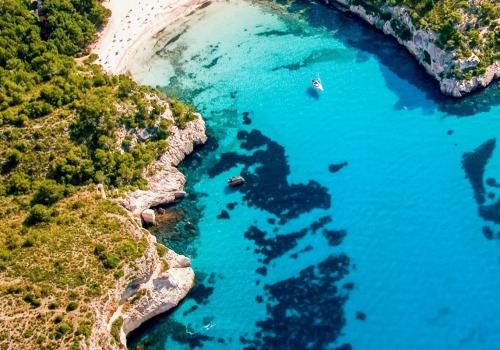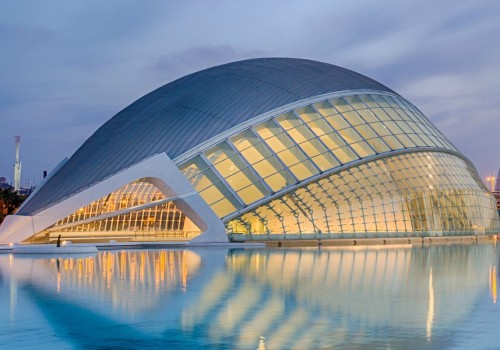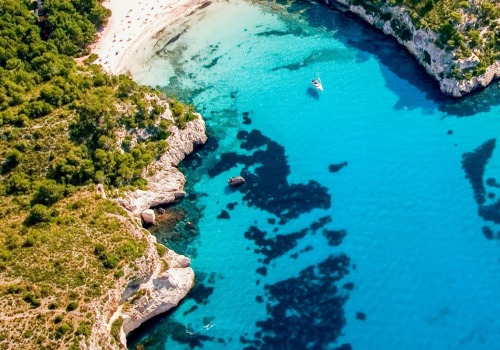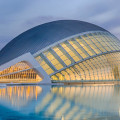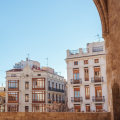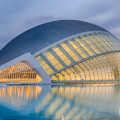Sagrada Familia and Gaudi places in Barcelona. The Great Mosque of Cordoba (Mosque). The Prado and the Paseo del Artes, Madrid. Pamplona is a city in Navarra, famous for its San Fermín festival that is held every year from 6 to 14 July.
At the heart of the festival is El Encierro, el encierro, an activity that consists of running in front of a dozen bulls that have been released, on a tour of the streets of the city. Protected from strong winds by steep cliffs and islands, many say that La Concha, in San Sebastián, is one of the best urban beaches in Europe, let alone in Spain. Here you can surf, stroll along the promenade in search of good restaurants and enjoy the beautiful views of the beach. The Aqueduct of Segovia is one of the best preserved monuments left by the Romans in Spain.
The old aqueduct carries water 16 km (10 miles) from the Frio River to Segovia and was built with about 24,000 solid granite blocks without the use of mortar. Probably built around 50 AD, it still provided water to the city in the 20th century. Located between Madrid and Valencia, Cuenca is a wonderful example of a medieval city, built on the steep slopes of a mountain. The numerous “hanging houses” are built to the edge of the cliff, making Cuenca one of the most striking cities in Spain, a jewel in the province of Castilla La Mancha.
Ibiza is one of the Balearic Islands in the Mediterranean Sea, off the coast of Spain. The island is one of the most popular party destinations in all of Europe. During the summer, the island's population doubles as tourists flock to Ibiza to enjoy nightclubs, beach bars and restaurants. Located in the foothills of the Sierra de Guadarrama, El Escorial was the political center of the Spanish empire under King Philip II.
Philip named Juan Bautista de Toledo an architect in 1559 and together they designed El Escorial as a monument to the role of Spain as the center of the Christian world. Nowadays it works as a monastery, royal palace, museum and school. Part fortress, part palace and part garden, the Alhambra is situated on a plateau overlooking the city of Granada, in southern Spain. The palace was built in the 14th century by the Nasrid sultans.
The Alhambra is now one of the main tourist attractions in Spain and many visitors come to Granada just to see the Alhambra. There is never a day when the Prado Museum is not full of gawking tourists. This museum houses the largest collection of Spanish and European art, of impressive medieval works from the 12th century and avant-garde movements. Works by artists such as Goya, Raphael, Rubens and Velázquez can be found here.
The institute was established 200 years ago and brings together the precious works of artists ranging from Bosch, Titian, El Greco and modern painters. First-time visitors are sure to visit this museum to witness famous works of art such as Las Meninas by Diego Velázquez and more. The Gothic architecture of Cuenca Cathedral is one of the main attractions in Spain. Originally built in the 12th century, this attractive monument houses the precious remains of the founding bishops and members of the Montemayor family.
Tourists visit this cathedral to see the 18th century altar, the Renaissance-style arch of Arco de Jamete and the intricate carved wooden ceiling. The church also hosts art exhibitions and other private events. When visiting Cuenca, it's hard to miss this cathedral because it's conveniently located in the central Plaza Mayor. The tour consists of 37 different stops to discover artifacts and remains in and around the church.
The gigantic arched gate that leads to the cathedral is truly fascinating, as travelers gather here to take some pictures. High on Barcelona's skyline is the historic Sagrada Familia, designed by Catalan architect Antoni Gaudí. The construction of this Roman Catholic church began in 1882 and is one of Gaudí's most famous works. The basilica can accommodate about 14,000 people inside and is 170 meters high.
The medieval fortress located on a plateau is the Alhambra Palace itself in Granada. Built in the 14th century by Nasrid sultans, this infrastructure represented Spanish civilization in the Middle Ages. Construction of the palace began in 712 and continued after the conquest of King Peter in the 1300 century. In addition to the exterior, the rooms and living rooms are impressive, with neo-Moorish details throughout.
The garden is also a must see, nestled in fragrant orange and lemon trees. It is only in Barcelona that tourists can find a Gaudí public park of more than 17 hectares in size. Famous for its glamorous terrace, iconic entrance and curved stone columns, this museum showcases some of Gaudí's works. The museum houses the iconic dragon staircase, the hypostyle room, the Austria gardens and the portico of the laundry room.
Perfect for a walk in the open air, Park Güell receives an annual tourist count of around 12 million, who come here for the architectural wonder. The lush environment combined with unconventional infrastructure, this public park is considered a work of art. UNESCO added Park Güell as a World Heritage Site in 1984, which served as one of the cultural assets existing today. What is Spain famous for? 10 best-known things in Spain.
Tourists and locals alike flock to Retiro in good weather to escape the hot sun, either in the shade or to sunbathe. Much of Ronda's attraction lies in this extraordinary view, or in walking to the Guadalquivir River or following one of the donkey trails through the rich green valley below. The main attractions of the city include medieval towers, Renaissance palaces, the Romanesque collegiate church of Santa Juliana, the National Museum and Research Center of Altamira. A wonderful symbol of Spanish culture, flamenco is something that many tourists look forward to when they visit the country.
Ávila within the walls has remained virtually unchanged for centuries; the atmosphere is solemn and calm, as if it had gone back in time to medieval Spain. Almost 200 years old, the Prado Museum, officially known as the Museo Nacional del Prado, is the main national art museum in Spain. Be sure to visit the best attractions in Spain between March and May for colorful festivals, a sea of fun-loving locals and fewer crowds. One of its main attractions is the impressive Guggenheim Museum, an architectural masterpiece that will leave you mesmerized from the start.
In addition to the delicious food, the main attractions to see in Logroño include the Cathedral of Santa Maria de la Redonda, the Cube del Revellin Fort, the ancient city wall and walking along the Ebro River Park to an arched stone bridge. Often considered one of the most beautiful buildings in the world, La Sagrada Familia is a must-see attraction for anyone visiting Barcelona. Barcelona is the most visited city in Spain, and the Basilica of the Sagrada Familia is the most visited tourist attraction in the country. The Mosque (in Spanish means “mosque”) of Córdoba is a fascinating building famous for the forest of pillars and arches inside the main hall.
The best thing about this cultural attraction is that it can be seen all year round and practically anywhere. . .

